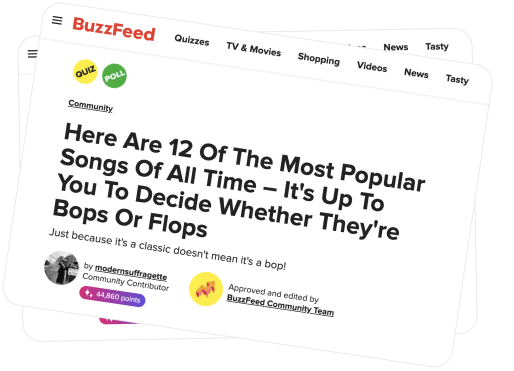1. CDC say no alcohol, women should “Protect Your Womb From the Devil Drink”

5. Meat Causes Cancer? “What the state isn’t telling you about processed meat”

By all measures, 2016 has been an interesting year for science and health news. As was evident by the attention given to “fake news,” people don’t like being duped. So we decided to round up some of the worst headlines perpetuating “fake science,” the unsubstantiated claims behind the internet’s favorite theories. From the seemingly plausible to the downright ridiculous, The Center for Accountability in Science brings you the Worst Fear-Driven Headlines of 2016.

We’ll blame this one on the Centers for Disease Control (CDC), since their recommendations that women of reproductive age who aren’t on birth control stop drinking or risk having babies with fetal alcohol syndrome truly did warrant every satirical headline the press had to throw at it.
While fetal alcohol syndrome is a serious condition with lifelong implications, science doesn’t support the notion that a single drink will harm a developing fetus. The CDC’s overblown language betrays a growing trend among government agencies to communicate a worst-case scenario as if it were a likely health outcome.
This attitude exacerbates Americans’ lack of science and health understanding. By failing to communicate gradations of risk, people become used to “all or none” scenarios – think “coffee causes cancer,” “plastic lowers IQ.” And misinformation makes its way to the general public.

Rather than the headline itself fueling scientifically unsupported fears, this one belays one of our worst: the leader of the free world on the record questioning the efficacy and safety of vaccines.
First of all: Vaccines do not cause autism.
In 1998, a study by Andrew Wakefield claimed the measles, mumps and rubella (MMR) vaccine caused autism. It was uncovered that Wakefield deliberately falsified data by altering patients' medical records. Subsequently, his medical license was revoked, the paper retracted, but the damage had been done.
Almost two decades later, and in spite of volumes of scientific literature disproving Wakefield’s claim, the myth that vaccines cause autism persists.
Widespread fear has contributed to the deadly resurgence of previously controlled diseases like diphtheria and measles. Although most of us choose to utilize modern medicine, we’d like to remind those who don’t that measles used to kill 2.6 million people each year before a vaccine was developed. Disease rates are low today because of vaccinations. And we’d prefer not to return to an age where your cough would likely end in death. Thanks.

One of the hallmarks of pseudoscience is its ability to cause panic, and on that front there are no alarm-generating topics quite like endocrine disruptors. The study behind this particular headline has been criticized by the scientific community for its illogical foundation.
Primarily, the burden of disease attributed to endocrine disrupting chemicals is not evidence-based. Thus, any subsequent economic evaluation of disease burden isn’t accurate. After all, a statistic can only be as good as the data it evaluates.
Cost estimates were based on the assumption that every substance in question met the definition of an “endocrine disruptor.” That’s a major assumption, considering most studies can’t demonstrate health consequences, endocrine-related or otherwise, at levels experienced by the general population.
Additionally, the authors neglect to detail how they selected studies “proving” endocrine disruption in the first place. Studies with a sound methodology (replicability, large sample size, identification of flaws) tend not to support endocrine-disrupting allegations.

The dreaded “M” word! If Monsanto is involved, our oatmeal must be slowly poisoning us. Right?
HuffPo paints the U.S. as soft on chemicals by constructing a narrative of widespread food contamination. But the great oatmeal scare of 2016 was based off finding 1.67 parts per million – that’s less than .00002 g per serving – glyphosate residues in food. Criticism of the United States’ lax regulation of the herbicide compared to Europe’s strict 20 ppm tolerance in oats somehow neglected to connect the dots observing glyphosate residues were still less than one tenth what European regulations allow.
Now, no one wants an excess of foreign material in their food. But the real concerns over glyphosate are fueled by allegations that exposure to the chemical causes cancer. In reality, government agencies in the U.S., Australia, New Zealand, South Africa, and even the United Nations and World Health Organization maintain that glyphosate is an unlikely carcinogen which doesn’t introduce an unreasonable health risk.
To uncover the motivations driving glyphosate fears, you have to take a step back. Glyphosate is the active ingredient in RoundUp, the weed-killer which some crops have been genetically modified to withstand. No glyphosate means no need for glyphosate-resistant genetically modified crops.
Rather than attacking GMOs directly, anti-GMO activists went after the herbicide used to protect them. And unfortunately, agenda-driven warnings tend to make more of an impact than science-based assurances.

Californians are up in arms that the state hasn’t yet required labels warning of the dangers of hot dogs. The anger follows the International Agency for Research on Cancer (IARC) classifying processed meat as a definite, and red meat as a probable carcinogen. We take several issues with the science behind these decisions.
Studies examining carcinogenicity of foodstuffs rely heavily on self-reporting, which almost always yields questionable results. Anyone who’s reached into their chip bag to find it suddenly empty know how easy it is to underestimate consumption. And often, serving sizes are unclear. Do you have any idea how many ounces of ground beef were in the pasta you ordered last week?
We’re also limited by what we ask. Questionnaires which fail to control for every variable in life (which would be impossible) leave scientists with bad data.
Additionally, IARC’s ranking system doesn’t work as you’d think.
Rather than categorizing increasing risk, items are grouped based on the amount of research linking the substance to cancer. If many sources indicate a weak link, it is assigned to Group 1 (the “definites”). Conversely, if lack of interest in a subject yields only a single study exploring the cancer-causing potential of a substance which turns out to be dangerously carcinogenic, it will still be given a lower rank.
This evaluation of hazard (can something cause cancer) rather than risk (does something cause cancer) yields questionable results, so that motor oil is assigned the same category – Group 1 – as the ionizing radiation of a nuclear blast. Common sense will tell you that changing the oil in your car doesn’t carry the same consequence as walking into the smoldering remains of Chernobyl. Yet the two, and, apparently, processed meat, are Group 1 carcinogens.
